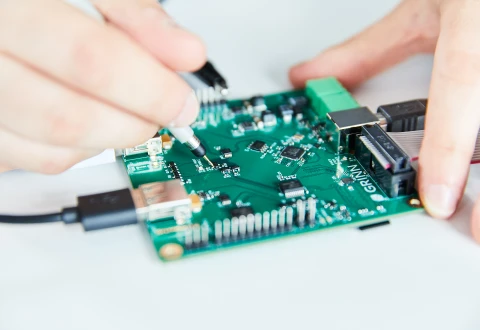When talking about IoT, often the most expensive component is embedded software development. Let's talk about how you can save on development without compromising quality.
During the development of embedded software, developers will face many difficulties related to security, stability, limited time allocated for development, and restrictions regarding the size of a given device. Security and stability factors are extremely important, especially in IoT, as devices are often used in production or in extreme conditions where they’re meant to prevent life-threatening situations.
The size limit (what is referred to as the small form factor) is also a challenge. When a device is designed to be placed in a limited space, clients try to reduce the enclosure to a minimum size, which limits developers in their choices of components and additional functionality. The limited-time allocated for development often makes it impossible to test several concepts before choosing the best one, and the production of hardware requires flexibility and a high degree of element integration.
Taking into account our experience in embedded software development, we will outline 5 tips on how to save money and solve the problems listed above without compromising the quality of the final product.
1. Use open-source software
Most likely, someone has already solved the problems that you have encountered. Do not waste time and resources on re-inventing ready-made and proven solutions and use open-source options instead. Follow related updates in popular communities where interesting cases and hints often appear.
2. Test at all stages
Testing at every stage of development will save a considerable amount of time and money in the long run. We recommend implementing continuous testing throughout the process; that is, automatic testing of the software delivery to assess risks and spot and fix problems as quickly as possible in real time. Additionally, implementation of a unit test in the process will get you an almost full guarantee of trouble-free code during software integration.
3. Continuous integration
Consider adding continuous integration as well; this will help you avoid repetitions, allow you to notice problems earlier, and reduce the time needed to connect the various parts of the project carried out by different people. We recommend integrating changes into the main repository as often as possible. If this is not already practiced in your development process, the Project Manager will have to devote some additional time to monitor the regularity of updating the repository until it becomes a habit.
4. Use ready-made modules
Just like with open-source software, you can save time and money by using a ready-made hardware SOM (system on module), where all necessary elements have already been integrated and tested. You can use the SOM as a base for further development, and, in the case of simple projects, even as a ready-made blueprint. You can also find similar modules in our offer: https://grinn-global.com/products/
5. Check & test onsite
Before entering the market, each device is tested in laboratories. Such tests are quite expensive, they take time, and laboratories are often overloaded with orders, so a customer sometimes has to wait from several weeks to several months for a finished study. If possible, choose companies who can perform all or part of the testing and fix possible problems on-site, so that passing the test in a certified laboratory becomes more of a formality.
A separate point we would like to address is the qualification of developers. When attempting to cut costs on developer skills, you often have to pay double the price, redo the product from scratch, or go through painful and expensive lawsuits. Rely on reliable service providers whom you don't have to watch over.
We sincerely hope that our tips will help you save both your budget and your sanity when developing embedded software. We wish you only successful projects and smooth integration!
 Kateryna Kozakova
Kateryna Kozakova






















